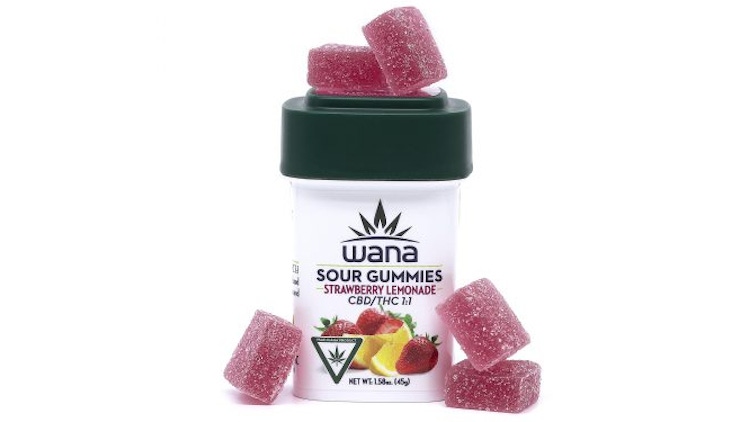Can the Cannabis Industry Eat its Way Back to Success?

To mitigate risk, the edible cannabis market needs packaging that clearly communicates dosage, warnings and regulatory information, as well as includes child-resistant (CR) features.
We’ve all heard the recent story about the professional basketball player who ingested an edible cannabis product infused with tetrahydrocannabinol (THC) while on a plane. He had a panic attack followed by a full-out seizure, which leads one to speculate whether or not he read the dosage instructions on the package. After all, it just looks like candy — right?
This story suggests why edibles are surging in popularity, and their potential downsides.
On the one hand, edibles don’t have the bad press associated with vaping. Just recently, popular flavors such as fruit and mint have been prohibited in a newly-signed national law that seeks to prevent underage vaping and further damage from lung-related illnesses. Edibles are portable, require no paraphernalia and you can ingest them anywhere—even on a plane.
On the other hand, their “innocent” look is also their danger point. People have a hard time taking the dosage and warning information on their labels seriously.
What does this mean for package designers? Edibles offer the potential for innovative, fun design. With the cannabis industry still sorting itself out as a result of the recent vaping deaths and stock market plummet, edibles have an opportunity to create a safe zone.
At the same time, because edibles are such an attractive alternative to smokables, it’s doubly important that dosage, warning, regulatory information and particularly child-resistant (CR) features are crystal clear on packages.
How packaging can address these issues.
One company that seems to have a firm fix on its target market is Wana Brands. This Colorado-based maker of edibles tells a story on its website, where we see middle-aged to older people dressed in yoga attire. Clearly, they are positioning their product as a healthy alternative to vaping and smokables. Users are captured in videos doing yoga moves and taking products such as drops, capsules and gummies — no smoking to be seen.
One video is devoted to the brand’s new packaging design. Attributes include biodegradable, food-safe plastic, a freshness seal, tamper-resistant closure and recyclable container. The sustainability promise is also compelling — “Reduces Packaging Waste by Over 60%!”
The actual package for their gummy products (see photo above) contains the three elements mentioned earlier loud and clear.
First, it’s a modern, clean design that accentuates the appeal of the product with a colorful, appetizing fruit graphic.
Second, the marijuana leaf is clearly displayed, as is the dosage: 100 milligram THC per package, 10mg per piece.
Third, there is a bold warning label on the front which says: “Contains Marijuana. Keep Away from Children.”
In an age when everything — cannabis included — seems to be marketed to Millennials, it’s worth asking, why is this brand so visually positioning itself to Boomers? Of course, we shouldn’t forget that Boomers introduced marijuana to the market in the first place. But also, perhaps the product helps with those aches and pains that come with age. And it bears pointing out that most of today’s disposable income is in the pockets of these older consumers. Millennials and Gen Z are too busy paying off college.
Pouches are big and converters get into the action.
Seven years ago, Jim Andrasic of American Pouch Converters saw a white space opportunity with the legalization of cannabis that began in Colorado and started to spread nationally.
A print converter and manufacturer of pouch technology for consumer packaged goods (CPG) brands, the company was highly respected for its innovation around child-resistant designs and their ability to meet regulatory standards. “We did extensive research,” Andrasic remarks, “and discovered that most of the cannabis brands were getting their packaging from China where there is little familiarity with the US regulatory climate. In fact, a lot of the pouches for edibles and medicines were not child resistant at all.”
____________________________________________________________________________________________
 Find your success! Subscribe to free Packaging Digest enewsletters.
Find your success! Subscribe to free Packaging Digest enewsletters.
____________________________________________________________________________________________
Adrasic and his team were highly aware of the complexities posed by the state-by-state nature of the US cannabis market. They did 90 days of research on cannabis packaging and what would be required by states moving toward legalization. The company became an authority for brands looking to get into the market. American Pouch Converters knew the regs better than almost anyone in packaging.
“We were ahead of the curve when it comes child-resistant pouches,” says Andrasic. “We manufacture all styles of CR pouches. This includes stand-up, 3-side-seal, box bottom, bottom load and CR delivery pouches. When we started, there were over five basic CR pouch designs out there, and most would not pass testing. Our products, Intelli-Pouch with radio frequency identification (RFID) technology and anti-counterfeit are on pace with government-approved testing labs.
“We decided to specialize in CR pouches because the regulations are so tough. Brands can lose their license if their packaging is out of spec. And you won’t get it back. So, understanding compliance has been a huge business plus for our company. In fact, we’ve done so well with our slider, press-and-seal and side-opening pouches, we’re the biggest player out there—and we just got bigger.” Andrasic is referring to its recent merger with Advanced Converting Works (ACW).
“When we started this journey five years ago, it was chancy. A lot of our brand partners said, ‘Why are you talking to the weed guys?’ This is one of the hottest markets and it keeps evolving. What does the future look like? Testing is in the works to tap consumer DNA that will show exactly what dosage a person needs, and we’re involved in the trials. This will change the face of packaging in edibles and all other forms of cannabis products. It’s my dream come true,” Andrasic says.
Why packaging matters so much
Just what are the hottest cannabis-based extract products today? Per Greenentrepreneur, it’s both cannabidiol (CBD) and THC gummies. In 2018, CBD gummies were the third most-searched food term in the US on Google. Today, more FDA-tolerant hemp-based gummies are offered on Amazon with a pitch: “The best way to cope with the stresses of daily life is to take the edge off and enjoy some of the benefits Hemp Gummies have to offer.”
Packaging technology is becoming more and more critical as well. Producers and sellers are all looking to bring their buyers closer to their products, provide data and comply with regulations. Much of this technology can be delivered by the packager through the use of universal bar codes, quick response (QR) codes and radio frequency identification (RFID) technology. With a simple scan, you can identify the age of the product, where it was produced and even who bought it.
Are the current struggles in the cannabis industry merely a brief pause in the inevitable transition to a robust market? On November 14, 2019, Pew Research reported two-thirds of Americans say the use of marijuana should be legal and, currently, the “share of US adults who oppose legalization has fallen from 52% in 2010 to 32% today.”
Stay tuned.
About the Author(s)
You May Also Like




